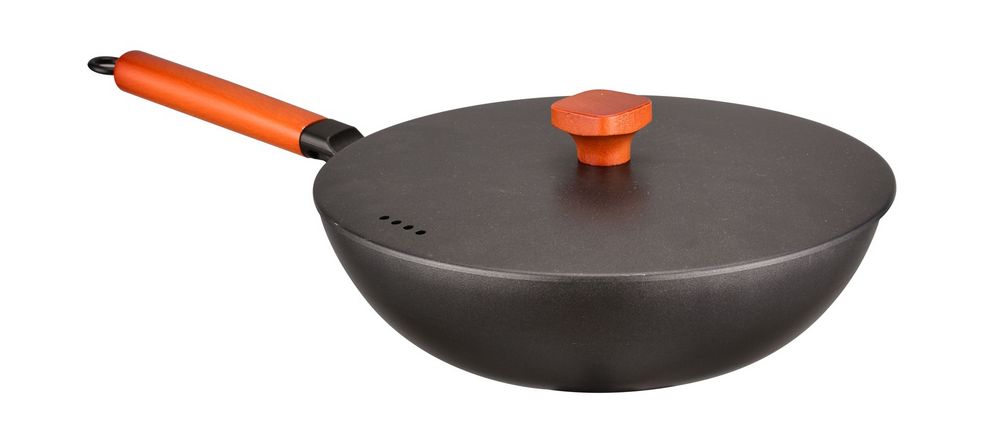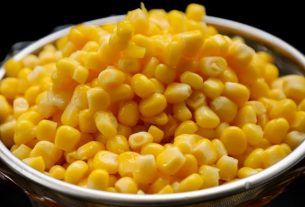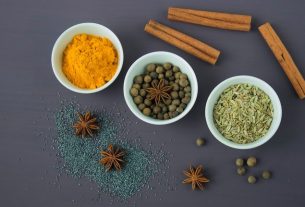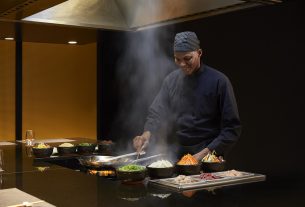Researches have shown that some of the foods we eat are better when they are fried. They can even taste better when deep-fried. The unfortunate thing is that dunking your food in oil does not make it any healthier, there must be moderation for everything. For one reason or another, no one has invested in the machine that has only one purpose to fry our foods. However, how about getting pots that will boil or steam the veggies professionally, deep-frying the meal to make it perfect for consumption.
What we need to find out now is getting the best type of pots that can be used to deep fry. Woks, metal pots, and cast iron pots are the pots that are considered best to deep fry. The best set of pots has to be deep pots because the food will be covered completely by oil. Several other factors are also to be considered such as if the pot will need to be well seasoned.
What we have compiled is to give you all you have to know when you want to decide on purchasing your pots for deep frying. You need to check out these three pots that are best to deep fry. We have made sure to search on the best set of pots you can use and we have also gotten how you can use them.
The Best Pots For Deep Frying
| S/N | Name of Pot | Type and Material |
| 1. | Helen Chen’s Asian Kitchen Flat Bottom Wok, Carbon Steel With Lid | Carbon steel wok (with lid) |
| 2. | Craft Wok Traditional Hand Hammered Carbon Steel Pow Wok | Carbon steel wok |
| 3. | Copper Chef 8″ /11″ Deep Dish Pan 4 Pc Set | Copper deep dish pan |
| 4. | Cook N Home Stainless Steel Saucepot with Lid | Stainless steel sauce pot |
| 5. | Lodge 5 Quart Pre-Seasoned Pot with Lid and Dual Loop Handle | Cast iron dutch oven |
| 6. | Lodge 6 Classic Red Enamel Dutch Oven | Porcelain-coated dutch oven |
When you want to buy pots that are good for deep frying, deep your thumb into the pots because all the pots need to fit and must be submerged completely in oil when you fry over their lifespan. For almost all recipes, you will need around three to four oil inches, this means your pot should be about five or six inches deep. Also, remember that your pot will retain more heat the thicker its walls are. If the pot comes with a handy pouring spout, life will be easier for you when you are transferring the oil into a container to store after you have used it.
The three best pots used to deep fry are:
- Wok
- Metal
- Cast iron
Woks
You have to consider a lot of things before you use woks to deep fry. The amount of spatters that could reach the outside of the pan is reduced thanks to its sloped sides and you can also use a little less oil when using for the exact amount of your food because of its funnel shape. Another good thing is that once it is ready, it is easier to scoop out. Ensure not to use anything non-stick because the heat from the oil could allow chemicals leached in the food. Always ensure you avoid stuff that easily scratches when you want to use a wok to cook stir-fries among other cooking.
-
Helen Chen’s Asian Kitchen Flat Bottom Wok, Carbon Steel With Lid
You can firmly hold on to its handle helper and bamboo handle that is resistant to heat. It has a flat bottom that is perfecting fit for electric hubs or ceramic that will sturdily sit on the stove as work goes on.
Key features:
- The wok contains a recipe booklet that is an inspiration and a very lovely bamboo spatula.
- This wok has lids that are giants, domed wonders, and very perfect to keep the oil hot and prevent the kitchen from spattering. It is not every wok that comes with lids.
-
Craft Wok Traditional Hand Hammered Carbon Steel Pow Wok
The bottom of this wok is round and makes it ideal to use by gas stoves. It is considered to be the frying chef’s dream wok that is very perfect to use to deep fry beautifully seasoning the pot allowing you to make some legendary stir-fries anytime you want to. If you decide to prepare soups in the deep dish, you can.
Key features:
- When you are tossing or frying, you can hold the wooden handle firmly.
- It is of high quality that is hand-hammered by professionals, largely considered as a traditional Chinese walk.
Metal
Metal will do a pretty good job to get the heat evenly distributed as much as possible. Metal is very easy to maintain, it is inexpensive considering the quality and it is very durable to use.
-
Copper Chef 8″ /11″ Deep Dish Pan 4 Pc Set
You will usually not find copper easily for sale, in case you find one for a good deal, don’t hesitate but just buy it. Consider copper to be perfectly excellent for your deep frying because it is the best in distributing heat.
Key features:
- The pan can be easily used over induction stovetops because it has a bottom that has a stainless-steel induction plate.
- We usually recommended avoiding non-stick coatings, but the Cerami-Tech that is used on the pan does not contain dangerous chemicals as normally should be and it is extremely durable and that makes cleaning it up very easy.
-
Cook N Home Stainless Steel Saucepot with Lid
Using stainless steel will help keep the oil fresh longer than cast iron or copper will do though it is not so good to retain heat. But if you want to reuse your oil for another meal, stainless steel might be for you. They are not expensive, very large, but fairly lightweight. In case you are the type of person that loves adventure, this is good for you because you can deep-fry a turducken.
Key Features:
- The stainless steel pot’s tempered glass lid helps to keep from several splatters and you can also check the progress of the food without needing to lift your lid now and then.
- The Stainless steel pot has a bottom with an aluminum made core that helps to distribute heat and your steel is also suitable to use for induction stovetop.
- If you are deep frying for a large family, the stockpot will help contain plenty of the food thanks to its 20 qt.
Cast Iron
You will want your oil to be hot throughout the pot when you are deep frying to ensure that the food is cooked well all through. Cast iron pots heat up evenly and very quickly and you can also contain all the heat from every of it sides with your lid on the Dutch oven. Deep frying with your traditionally made cast iron pan or pot will help you to ensure it is kept seasoned over time. If you leave the oil in the pot for a long time, the iron could start to degrade the pot and this is its only downside. The best way to solve this is to transfer your oil into a container immediately it is cool. If you are using enameled pots, you wouldn’t have to worry about how to season or restore the oil.
-
Lodge 5 Quart Pre-Seasoned Pot with Lid and Dual Loop Handle
You can consider cast iron as one of those things that usually get better as you continue to use them. More than using this cast iron pot for deep frying, it can be used to sauté, simmer, bake, and roast. You can call it a one-man-band of a kitchen’s equivalent.
Key features:
- The pot can be used on a campfire or grill
- Generally, cast irons are needed to be seasoned before use, but this particular cast iron has been pre-seasoned and it is ready to be used.
-
Lodge 6 Classic Red Enamel Dutch Oven
The porcelain enamel used to coat the cast iron makes it to be non-porous and that means you wouldn’t need to season or temper it. You will still get the benefits of having a heavy-duty pot that has great heat retention and transfer ability and you can also clean it easily.
Key features:
- The lid will lock in the moisture and keep the oil from sputtering out on the sensitive arms and in the kitchen.
- It has a Dutch oven that is very versatile and can be used in an oven or most stovetops.
Additional Tools For Deep Frying Success
It is quite simple to master the deep frying cooking technique and two particular tools can make it easier; a stainless-steel spider or skimmer basket and candy thermometer or a high heat deep fryer. You can perfectly monitor the food if you find a thermometer that can hold the heat generated from boiling oil because it is not all the thermometers that can handle such a job. You will need the correct temperature to perfect do your cooking. You should get something that has a clip so that the thermometer will keep tacked to the pot throughout the process of frying get something that looks like long stem thermometers.
In case you are trying to fry something overnight and you do not have any thermometer, you can use some tricks to test if the oil is hot enough.
- Using a chopstick: if you think the oil is now ready to be used, dip your wooden chopstick into the oil, holding it in it. If you notice that there are nice bubbles in the oil, then it is ready to be used for cooking. In case the result is a bit crazy, your oil might have been too hot for use and before you burn the food, try to decrease the heat.
- Popcorn: you can drop one single popcorn kernel into the oil whenever you think it is ready. You will notice the corn pop when your oil has a temperature of 350°F.
You may need to buy a skimmer basket or spider so that the fried food can be contained. They are considered ladle/strainer/colander combinations that help make it safer and easier to fish the food once it is done without pouring out the hot boiling oil or using a tiny spoon that may eventually allow the food to simmer in your oil minutes longer than needed.

How To Safely Deep Fry Without A Deep Fryer
You are now equipped with the knowledge you need when you want to buy pots to be used for deep frying. However, you will need to know how you deep fry your foods properly. It is quite easy and very straight forward to deep fry your food, all you have to do is to put the food inside boiling oil, allow it to cook, and remove it. Furthermore, for safety, you have to keep some things in mind whenever you are cooking with hot oil.
The first thing you should know is that the thinner your food, the hotter your oil will be because thinner foods do not take too long to become cooked. Thicker foods such as chicken thighs will take a bit more time to be done without the outside burning out, you should try to fry at a lower temperature. A temperature range between 350 and 400°F will do just fine.
Also, ensure you do not overload the pot, be sure that you have a lot of room in the pot so that the individual pieces can freely move around, to stop them from being congested. Ensure that the temperature of the oil is where you wish before you add more food whenever you are making your food in batches.
Lastly, ensure that the oil is cooled completely before it is stored in any other container. The pot should be allowed to sit without the cover on the stove until the oil is cooled to room temperature. Strain your oil through your cheesecloth so that leftover particles will be removed.
Check out some other tips that may help you, but it depends on if you plan to fry in an oven, outdoor barbeque or grill, or on the stovetop.
Oven or BBQ
- The first thing you must do is to be sure the pot is grill or oven-safe with a very good lid that is also oven safe. Using the cast-iron Dutch oven will be your best bet.
- Ensure that the oil is hot enough by preheating the oven or setting the grill to a temperature of 400°F and monitoring the thermometer.
- Add the food as you should once the oil gets hot but you have to be careful when checking it and when moving the pot around to avoid the hot oil pouring on you.
Stovetop
- Put your draining station very close to the pot for the food to be easily taken out, putting it on your baking sheet that has been lined using a paper towel. You can sit a wire rack (flat) inside, or perhaps turn your traditional cooling rack upside down to get rid of excess oil so that the food will not get soggy from sitting in the oil.
- You are not allowed to overfill the pot because the oil will sputter and bubble when you add the food which could lead to overflowing oil. The oil should not fill the pot more than the halfway line.
Related Questions
What’s the difference between deep frying and shallow frying?
It is simple to know the difference between deep-frying and shallow frying and this is in the amount of your oil that is used in the frying process. Shallow frying will only make your food partially submerged inside the oil and you will flip it to the second side to completely cook. Deep frying, however, will have all the food fully submerged inside the oil through the process of cooking.
What should you not cook in cast iron?
You can use cast iron for almost all things, but some foods are generally not so good to be cooked inside it but use stainless steel. Any food that is acidic such as tomato sauce will ruin the cast iron pan, don’t use red sauces on cast iron pans. Cast iron usually retain very strong flavors, meaning you should not cook garlic, liver, or fishes in them because your next meals could taste like them. The cast irons are known to become better as you use over time because they are more seasoned. You should not fry delicate food like fish and egg in a new pan because it could stick a little. Only fry delicate things after you have used it for a long time.
What is the best oil for deep frying?
The most common oils that are used to deep fry are canola oil and peanut oil due to their subtle flavoring and very high smoke points. Depending on what flavor profile you want, you can use any refined oil. Soy, palm, sunflower, and safflower oil all have high smoke points and have a very mild flavor. You can try coconut oil or refined sesame oil to get a more distinct flavor.


